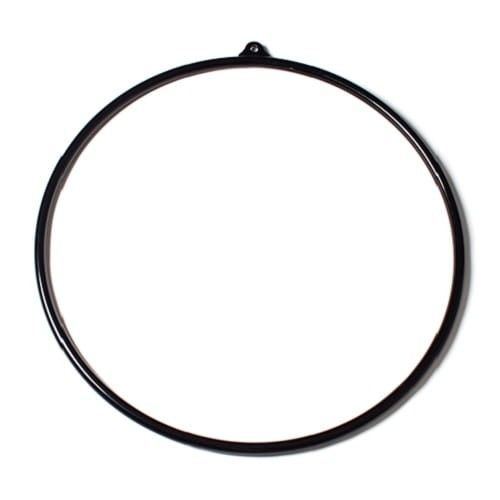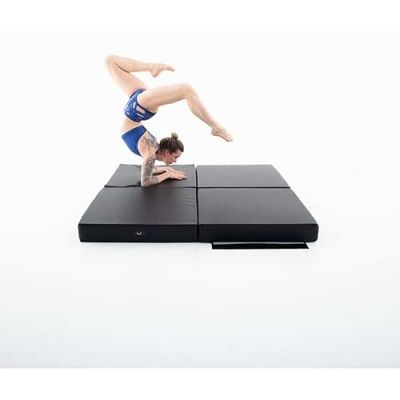The aerial hoop, also known as the lyra, is a stunning apparatus that has captivated audiences and fitness enthusiasts alike. This circular steel ring, suspended in the air, offers performers the opportunity to showcase their strength, grace, and creativity through breathtaking routines.
In this beginner’s guide, we’ll answer the question “What is aerial hoop?” by exploring its history, uses, benefits, and how you can start your aerial journey today.
What is Aerial Hoop?
The aerial hoop is a round metal apparatus designed for aerial acrobatics and performances. Suspended from the ceiling by one or two points, it is used in aerial arts, fitness classes, and circus shows to perform poses, spins, and dynamic tricks.
Key Features of the Aerial Hoop:
- Structure: A strong, circular steel frame.
- Varieties: Single-point hoops allow spinning and swinging, while double-point hoops offer more stability.
- Uses: Suitable for both static poses and dynamic, high-energy routines.
The aerial hoop is popular in modern performances like Cirque du Soleil and has also become a favorite in the fitness world for its blend of strength training and artistry.

Exclusive Offer: Enjoy a 10% discount on aerial hoop purchases for our valued readers. Use code ‘HOOP10’ at checkout to claim your savings. Click on the image to buy
Origins of Aerial Hoop
The origins of the aerial hoop can be traced back to the traditional circus arts of the 19th century. Originally, the hoop was made of a solid wooden circle covered in cloth. It was suspended from the ceiling by ropes or chains and used in combination with other aerial apparatuses such as trapeze and rope. Over time, the wooden hoop was replaced by a metal or aluminum hoop, which made it stronger, lighter, and more versatile.
As circus arts evolved, the hoop became a popular discipline among aerialists and performers. Today, the hoop is often seen in contemporary circus shows, dance performances, and aerial arts competitions. It has also become a popular fitness and recreational activity for people of all ages and abilities.
When exactly Aerial Hoop as a means of circus performances first appeared is rather vague. It is known, however, that since the late 1700s, metal hoops were used in house yards as a way of recreation for children
The first use of the hoop ever recorded is in an 1893 advertisement in New York Clipper where a performer called “Caedo” used this equipment. It was probably one of the first hoops made according to Edward Van Wyck’s statement in one of his letters in 1903.
Why Should You Try the Aerial Hoop?
Practicing on the aerial hoop offers numerous benefits, whether you’re an aspiring performer or simply looking for a fun way to stay active.
1. Full-Body Workout
- Engages your core, arms, shoulders, and legs.
- Improves flexibility and balance.
2. Enhances Creativity
- Encourages self-expression through movement and choreography.
- Inspires unique routines and artistic exploration.
3. Builds Confidence
- Conquering tricks and transitions boosts self-esteem.
- Learning new skills fosters a sense of accomplishment.
4. Reduces Stress
- The focus required for aerial moves helps you clear your mind and stay present.
Beginner-Friendly Moves on the Aerial Hoop
If you’re new to aerial hoop, start with these simple yet impressive moves:
1. Man in the Moon
A seated pose that’s perfect for beginners and offers a stunning photo opportunity.
2. Amazon
A basic seated position inside the hoop builds comfort with the apparatus.
3. Delilah
A graceful, reclining pose ideal for developing balance and flexibility.
These moves form the foundation for more advanced tricks as you build strength and confidence.
How to Start Your Aerial Hoop Journey
If you’re intrigued by the aerial hoop, here’s how you can begin:
1. Find a Class
Search for certified aerial fitness studios or circus schools offering beginner-friendly classes. Many provide all the equipment and guidance you need to get started safely.
2. Wear Appropriate Gear
- Opt for tight-fitting clothes to avoid snags on the hoop.
- Leggings and long-sleeved tops can protect your skin from friction.
3. Build Strength
Start with exercises like planks, pull-ups, and stretching to prepare your body for aerial movements.
4. Practice Consistently
Consistency is key! Attend regular classes and practice basic moves before advancing to more complex routines.
Why is important to buy hoops that meet safety standards?
Durability
Aerial hoop is a physically demanding discipline that puts a lot of stress on the equipment. Hoops that meet safety standards are made with high-quality materials and construction techniques that ensure they can withstand the rigors of aerial practice.
Strength
Safety standards for aerial hoops include minimum weight and load-bearing requirements. Hoops that meet these standards are strong enough to support the weight of the performer and any dynamic movements performed during aerial practice.
Safety
Hoops that meet safety standards are designed with safety in mind. They are tested and certified to ensure they can handle the forces placed on them during aerial practice, reducing the risk of equipment failure and injury.

Exclusive Offer: Use code ‘HOOP10’ at checkout to claim a 10% discount. TUV Certified. Click on the image to buy
Insurance
Many aerial studios and performance venues require performers to use equipment that meets safety standards to be covered by liability insurance. Using hoops that meet safety standards can help ensure that performers are protected in the event of an accident.
Peace of Mind
Knowing that you are using equipment that meets safety standards can give you peace of mind during aerial practice. You can focus on learning new skills and improving your technique, rather than worrying about the safety and durability of your equipment.
Ready to start your aerial hoop journey? Enjoy a 10% discount on high-quality, TUV-certified aerial hoops from Vertical Wise Shop. Use code ‘HOOP10’ at checkout for your savings, and ensure you’re using a safe, reliable hoop to practice on.
Using Protective Mats
When delving into the world of aerial acrobatics, safety is of paramount importance. The use of appropriate protective measures can shield you from injuries and allow you to enjoy the experience safely.
One of the fundamental protective measures is the use of protective mats during hoop practice. These mats provide shock absorption and safeguard in case of falls. It is important to choose high-quality protective mats that meet the required safety standards.
Safety is key in aerial practice. Keep yourself protected with top-quality safety mats from Vertical Wise Shop.

Conclusion
Overall, buying a hoop that meets safety standards is essential for the safety, durability, and performance of both the performer and the equipment. Whether you’re a seasoned performer or a curious beginner, the hoop is worth exploring. So why not give it a try and see where it takes you? If you’re ready to explore the aerial world and looking for the perfect hoop to suit your needs, check out our comprehensive Aerial Hoop Buying Guide for expert tips and advice.
FAQs About Aerial Hoop
Q: What is aerial hoop used for?
The aerial hoop is used for acrobatic performances, fitness training, and artistic routines. It’s a staple in modern circus acts and is growing in popularity as a fitness activity.
Q: Is aerial hoop safe for beginners?
Yes! With proper instruction and safety measures, the aerial hoop is safe for beginners. Most studios offer beginner classes tailored to those new to aerial arts.
Q: What’s the difference between a single-point and a double-point hoop?
- Single-point hoops: Allow more dynamic spinning and swinging.
- Double-point hoops: Offer greater stability, making them ideal for beginners.








